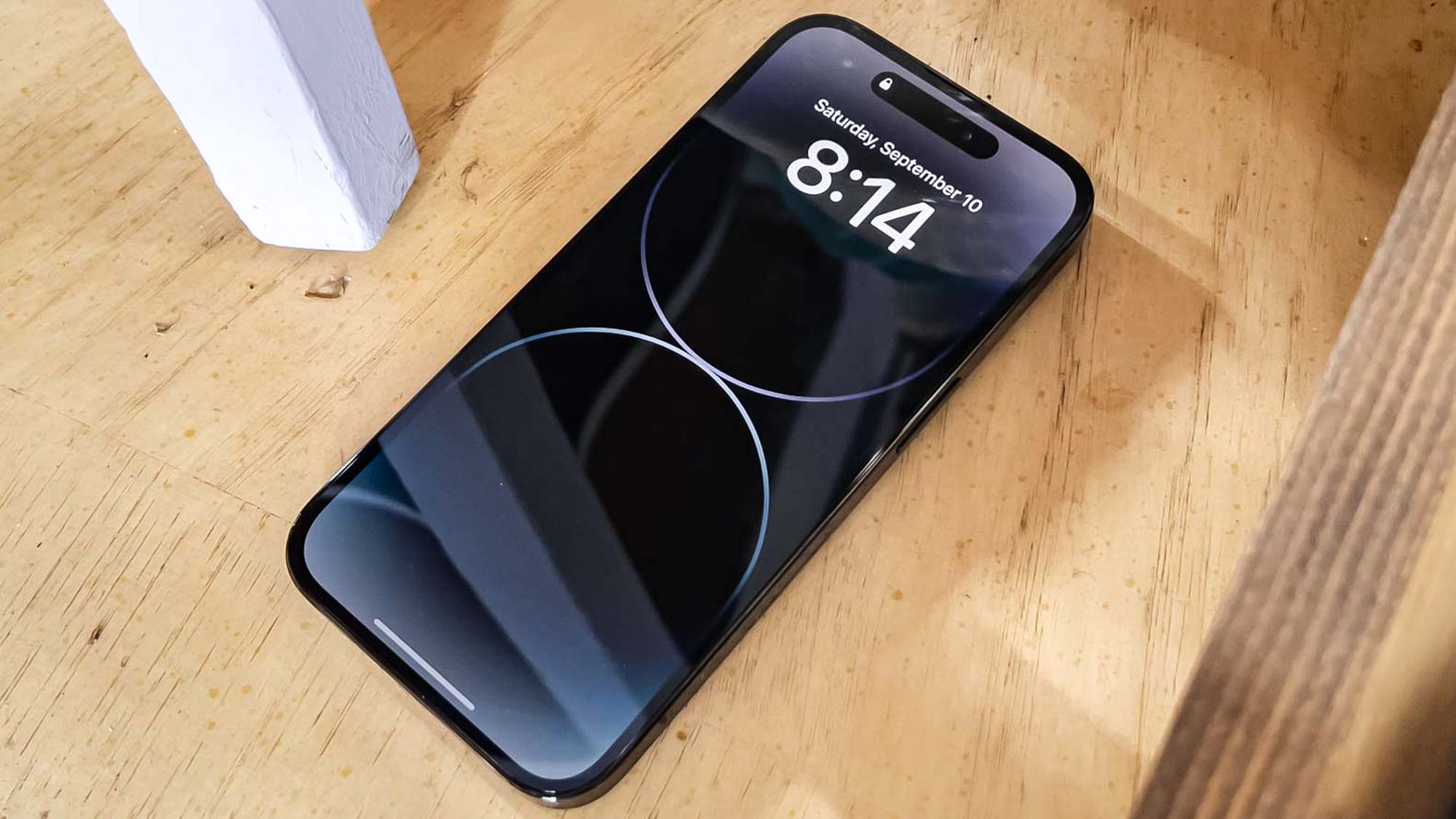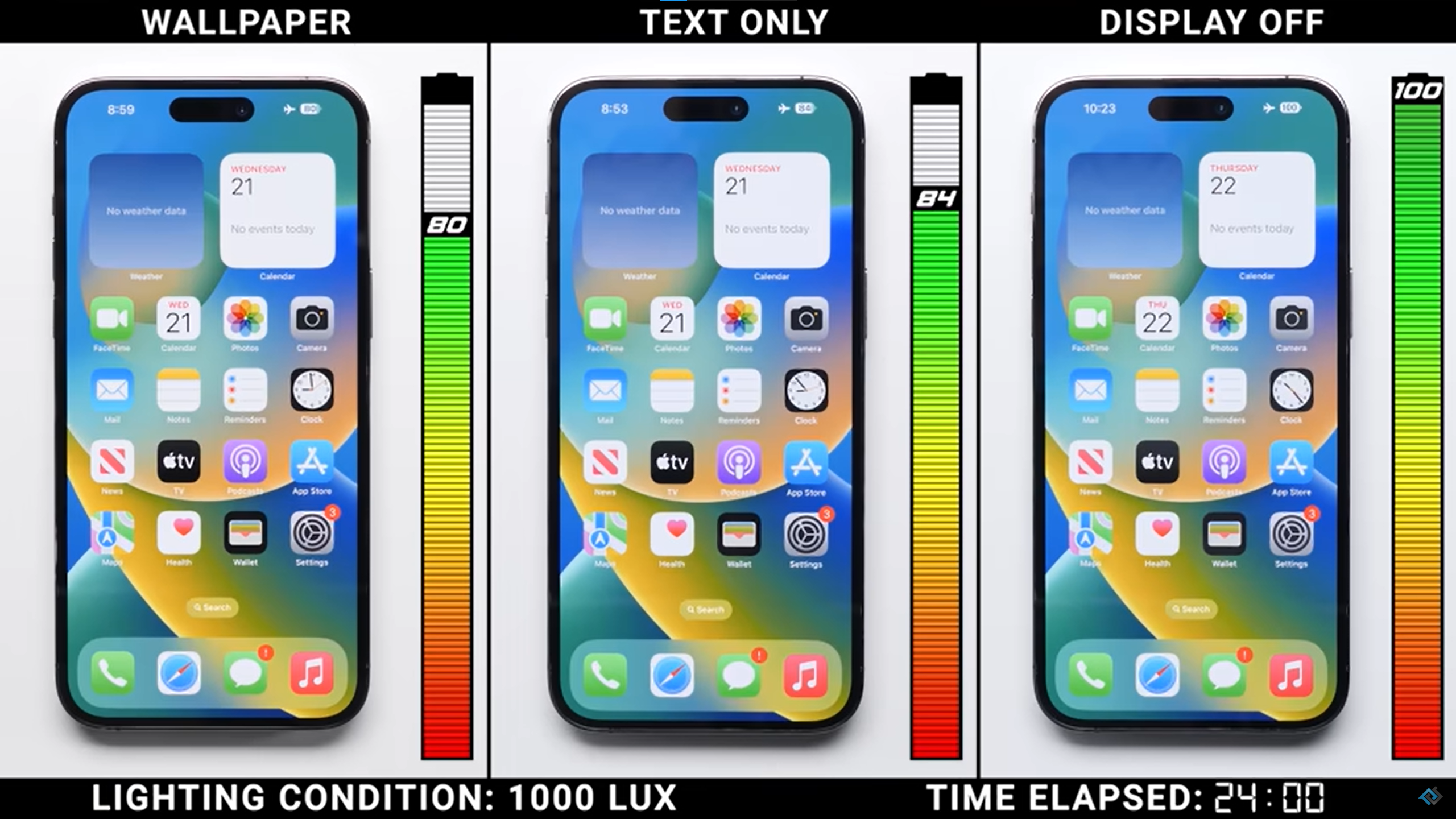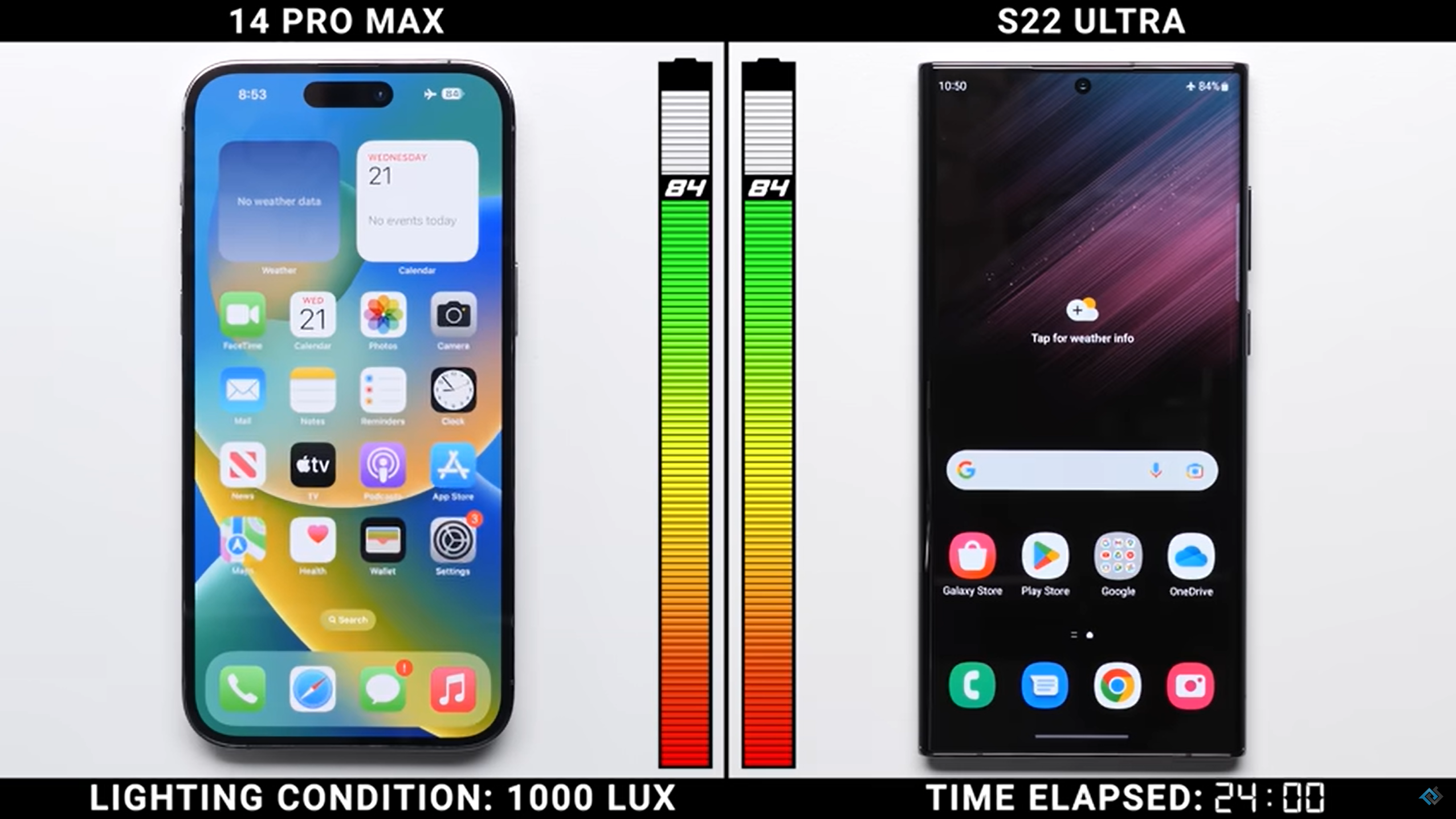iPhone 14 Pro AOD battery life tested — here's how much more power it uses
The iPhone 14 Pro always-on display uses a lot of power, new testing reveals

Blame for the iPhone 14 Pro's disappointing battery life can be firmly laid at the door of the iPhone 14 Pro always-on display, according to new tests from YouTube channel PhoneBuff.
We've already seen through our own experience that the iPhone 14 Pro's always-on display is a power hog, but PhoneBuff's lab testing gives us some more reliable and precise results on how big the impact is.
For the test, PhoneBuff ran the battery down on a locked iPhone 14 Pro with the always-on display in three different states — the default AOD, the AOD with wallpaper disabled (showing only the clock and notifications) and the AOD turned completely off. All phones were reset prior to the test, so there were no third-party apps that could potentially impact the result, and all were tested under the same light conditions.
After 24 hours, the results were this: the regular iPhone 14 Pro AOD (left in the image below) drained the battery by 20%, the clock-only AOD (center) drained it by 16%, and the no AOD option (right) seemingly didn't drain the battery at all, remaining at 100% for the full day. While the gap between the two AOD settings isn't that large considering the time elapsed, it's much more significant that the AOD consumes as much as 20% extra battery when enabled.

That said, it's very unlikely your iPhone 14 Pro's AOD will be active for this long, even over a full day. Using certain features, like Sleep Focus, or covering the screen disables the AOD, meaning that even with the AOD fully enabled, it won't be draining your battery overnight or when it's in your pocket.
Users, including our phones editor Jordan, have felt that Apple's approach to the always-on display, which shows your chosen wallpaper as well as your clock and widgets, is excessive. With iOS 16.2, Apple introduced the ability to remove the wallpaper and/or notifications from your iPhone 14 Pro or iPhone 14 Pro Max's AOD, but as the tests seem to show, these new settings don't do a whole lot for the power drain problem.
PhoneBuff's final test was to compare the iPhone 14 Pro's AOD to the Samsung Galaxy S22 Ultra's. The result here was a tie, with both draining to 84% on standby over 24 hours when the iPhone was set to a clock-only AOD.
Sign up to get the BEST of Tom's Guide direct to your inbox.
Get instant access to breaking news, the hottest reviews, great deals and helpful tips.

The iPhone 14 Pro's battery life is disappointing, compared to last year's iPhone 13 Pro, and it's the same with the iPhone 14 Pro Max too according to our testing. The AOD does seem to be the main culprit for this endurance difference, but it's not something many iPhone 14 Pro owners are going to want to turn off, since it's one of the phone's big new features.
Anyone put off by the current iPhones' battery life drop will instead have to look to the iPhone 15 and iPhone 15 Pro (and possibly an iPhone 15 Ultra) later this year. There are no rumors of AOD upgrades for these models as of right now, but we can hope between new hardware and a new version of iOS, the AOD-equipped models could help bring the iPhone's battery life back up to the peak it reached with the iPhone 13 series.

Richard is based in London, covering news, reviews and how-tos for phones, tablets, gaming, and whatever else people need advice on. Following on from his MA in Magazine Journalism at the University of Sheffield, he's also written for WIRED U.K., The Register and Creative Bloq. When not at work, he's likely thinking about how to brew the perfect cup of specialty coffee.

